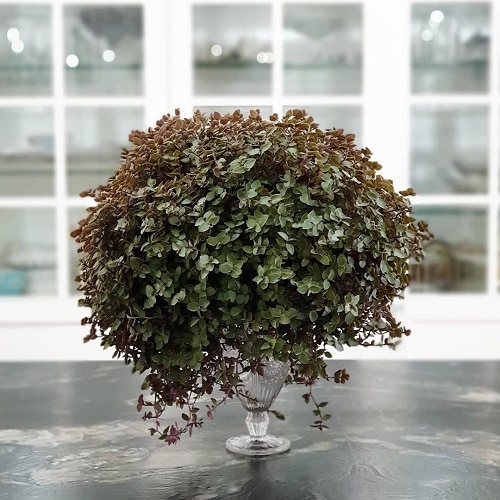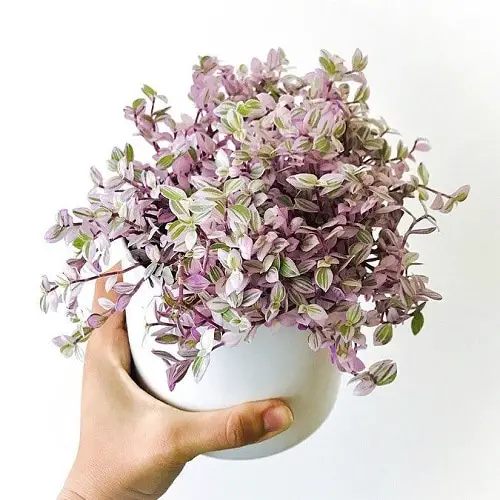Here’s all you need to know about Callisia Repens Care to keep this beautiful plant thriving for a long time to come! Here are all the tips and tricks!
Turtle vine is a low creeping succulent that grows with rounded green leaves with an underlying purple tone. An easy plant to grow, it can be resilient and very low maintenance as long as you know the tips and tricks of Callisia Repens Care. So, let’s find out!
Other Names: Creeping Basketplant, Turtle Vine, Bolivian Jew, Creeping Inch-Plant
Learn how to care for bromeliads here
Requirements for Growing Callisia Repens

Potting and Propagation
As the plant hardly grows above 4-5 inches tall, 4-6 inches of pot would be great. Re-potting for this succulent is generally unnecessary.
The plant can be easily propagated by snipping off a healthy leaf from a mother plant. Allow it to heal for a day, so it forms a callous. Plant it in a succulent mix. You can also propagate it from offsets. Just take it out using sharp and clean shears and plant it in a pot.
Temperature and Lighting
As a tropical plant, Callisia prefers a humid environment in a spot of indirect light or partial shade. These are common environmental conditions shared with most of the tropical house plants we invite into our home. The Callisia Repens does best in the temperature range of 50°-86°F (10°-30°C).
How Much Water Does it Need?
Water regularly but allow the topsoil to dry out before watering again. It is essential that you avoid overwatering the plant, and as it is succulent, it might cause root rot. The best rule to follow is to poke your finger in the topsoil and water only when you feel it dry to an inch deep.
Callisia Repens Care

To care for Callisis Repens indoors is quite an easy task with the proper steps taken. They are best kept in hanging pots which allows the foliage to grow well. You can also pot it in a traditionally structured pot, but regular pruning would be needed. Fill the pot up with peat, soil balls, or pebbles to prevent any form of root rot.
Fertilizer
Use a balanced fertilizer once in 6-8 weeks during the growing period. Follow the instructions at the label for dosage. Also, water the plant before the application, or it might burn the roots and cause leaves’ yellowing.
Pruning
While pruning, always use clean scissors or shears to reduce the chances of bacterial and fungal diseases. Remember to make neat incisions as deep wounds may shock the plant, causing weakened growth and a decline in health.
Pests and Diseases
Thankfully, the plant is resistant to most pests and diseases but may get attacked by red spider mites if the humidity levels drop too low. Misting its foliage will help you curb this problem down.
Keep Your Pets and Children Away!
Both cats and dogs might get a red rash while coming in contact with its foliage. As the plant also contains calcium oxalate crystals, it might cause severe issues when ingested by most pets.



thanks for the helpful imformation.